Windows 10 Creators Update comes with a new feature, Spatial Sound if you are listening to audio through your headphones. When enabled, the audio feels like it is playing around you as opposed to through the headphones. In simpler words, it is a 3D sound effect or surround sound. It is disabled by default. Here is how to enable it.
Advertisеment
Windows 10 makes spatial sound possible by using a combination of a special driver, special apps, and headphones (or other sound device) configured to produce spatial sound. Actually, this technology is intended to improve the sound quality of your headphones first and foremost.
To Enable Spatial Sound in Windows 10, right click the sound icon in the notification area (system tray).
![]()
Select "Playback devices" from the context menu.
Select the playback device in the list and click the button Properties.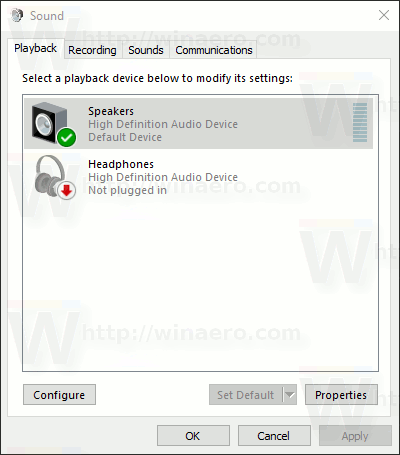
Go to the Spatial sound tab and select the spatial sound format, which includes Windows Sonic for Headphones and Dolby Atmos for headphones.
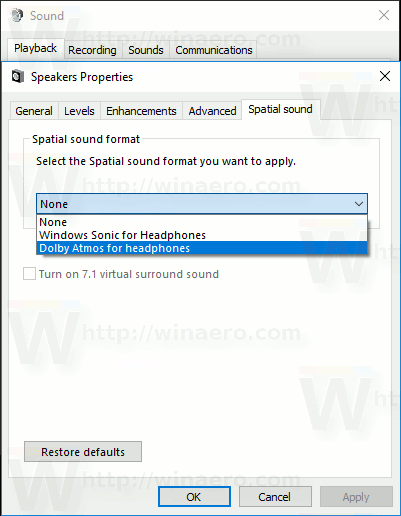
Dolby Atmos is a surround sound technology announced by the Dolby in 2012. It allows up to 128 audio tracks along with the associated spatial audio description metadata to create a dynamically rendering sound environment. During playback, each audio system renders the audio objects in real-time such that each sound is coming from its designated spot with respect to the loudspeakers present in the target theater.
In contrast, traditional multichannel technology essentially burns all the source audio tracks into a fixed number of channels during post-production. This has traditionally forced the re-recording mixer to make assumptions about the playback environment that may not apply very well to a particular theater. The addition of audio objects allows the mixer to be more creative, to bring more sounds off screen, and be confident of the results.
Dolby Atmos requires a special app from the Windows Store. If you choose this option, it will install the Dolby Access software based on Universal Windows Platform. In addition to headphones, the application supports sound enhancement for your Home Theater device. However, it should have hardware support of this particular Dolby technology. Here is how it looks:
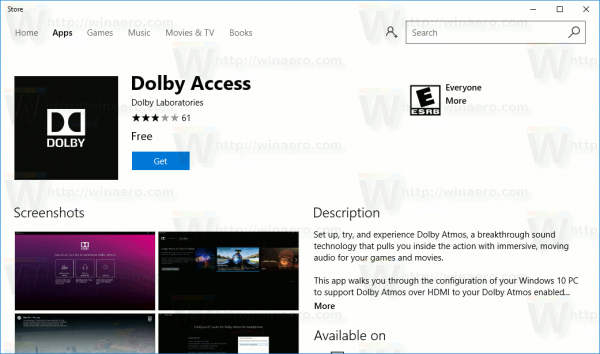
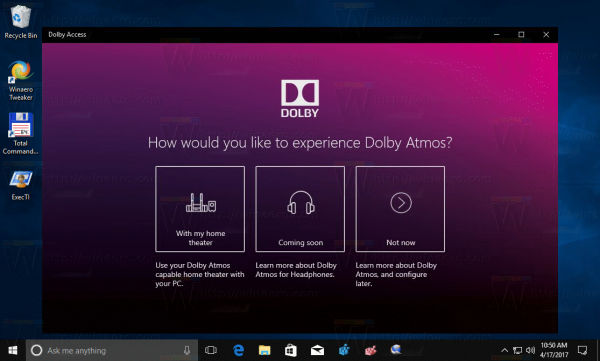
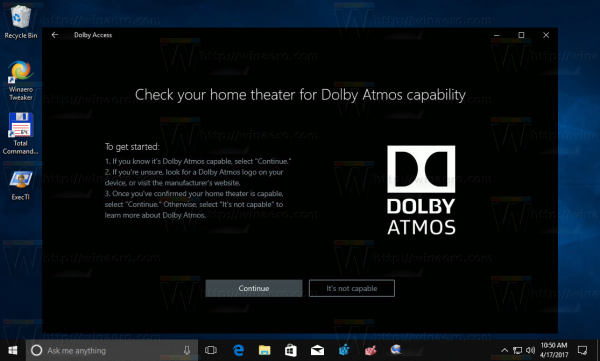
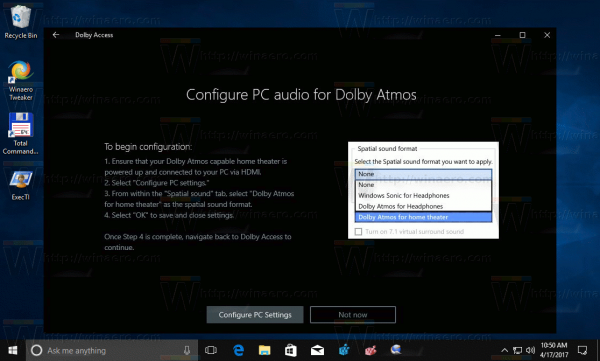
Once your Home Theater is connected (for example, with an HDMI cable), you will be able to pick it as the "format" in the configuration window of the Dolby Access app. It does not provide many options. Just pick the profile and the app will configure your hardware automatically.
The other option is Windows Sonic which is Microsoft’s audio platform for surround sound. It includes integrated spatial sound on Xbox and Windows, with support for both surround and elevation (above or below the listener) audio cues. The actual output format is selected by the user, and can be abstracted from Windows Sonic implementations; audio will be presented to speakers, headphones, and home theater receivers without needing any code or content changes.
Support us
Winaero greatly relies on your support. You can help the site keep bringing you interesting and useful content and software by using these options:

Why you didn’t mention that Dolby’s technology requires a payment? Anyway, talking about Windows Sonic, it didn’t impress me as the sound was a little bit clearer without any effects.